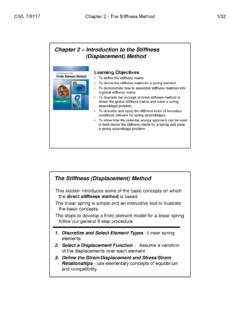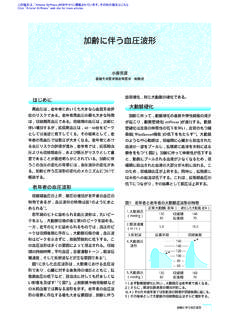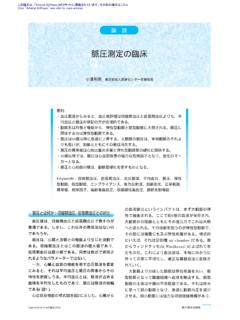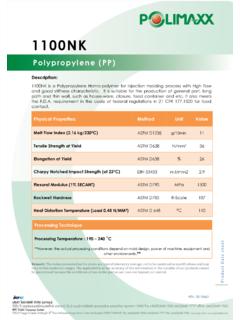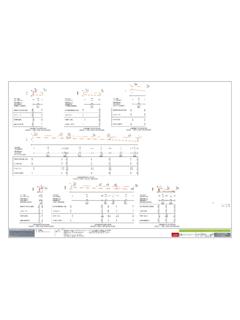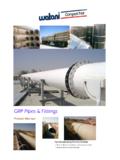Transcription of Methods to Determine Torsion Stiffness in an …
1 Computer-Aided Design & Applications, PACE (1), 2011, 67-75 2011 CAD Solutions, LLC, to Determine Torsion Stiffness in an Automotive ChassisSteven Tebby1, Ebrahim Esmailzadeh2and Ahmad Barari31 University of Ontario Institute of of Ontario Institute of of Ontario Institute of paper reviews three different approaches to Determine the Torsion Stiffness of anautomotive chassis and presents a Finite Element Analysis based method to estimate avehicle s Torsion Stiffness . As a case study, a typical sedan model is analyzed and theimplementation of the presented methodology is demonstrated. Also presented is ajustification of assuming linear Torsion Stiffness when analyzing the angle of twist. Thepresented methodology can be utilized in various aspects of vehicle structural :finite element analysis, automotive, Stiffness is an important characteristic in chassis design with an impact on the ride andcomfort as well as the performance of the vehicle [5],[6],[10].
2 With this in mind the goal of design is toincrease the Torsion Stiffness without significantly increasing the weight of the chassis. In order toachieve this goal this paper presents various Methods to Determine the Torsion Stiffness at differentstages in the development process. The different Methods include an analytical method, simulationmethod and experimental method. Also the reasons for seeking a linear Torsion Stiffness value arepresented. A sample simulation is performed using Finite Element Analysis (FEA).2 ANALYTICAL METHODD etermining Torsion Stiffness based only on the geometry of the chassis can be difficult for a vehiclegiven the complex geometries that are commonly found [3].
3 However by expanding on the principles ofsolid mechanics and making some simplifications a method can be developed to give an approximatevalue for the chassis. If the applied torque (T) is related to the angle of twist of a chassis ( ) throughthe following equation: = = Eqn. 1 Computer-Aided Design & Applications, PACE (1), 2011, 67-75 2011 CAD Solutions, LLC, :J= Polar moment of inertiaG= Material shear modulus of elasticityL= Characteristic length of cross sectionSince a chassis has multiple, complex cross sections it is necessary to consider the chassis as aseries of different cross-sections fixed together. With this assumption and the superposition method itis possible to analytically Determine the overall Torsion Stiffness for the vehicle s structure bysuperimposing the individual Stiffness values of the components [4].
4 The primary difficulty inanalytically determining the Torsion Stiffness is due to the complex geometries found in a vehiclechassis and the unknown nature of how these geometries will deform when twisted [7]. For these crosssections it can be assumed that the cross sections remain planar or that they remain undistorted intheir own plane. This leads to some inaccuracies in the value obtained however the analysis should bea good initial METHODThe simulation method is based on previously conducted studies where FEA is performed on thechassis [9]. A case study is presented later to validate the method described here. In this method equaland opposite loads are applied at the front suspension mounting locations while the rear mountinglocations remain fixed.
5 The equations used to Determine the Torsion Stiffness is based on the totaldeflection of the mounting locations. The Torsion Stiffness is calculated using the following equations. = = + Eqn. 2 Where: =tan /2 Eqn. 3 =tan /2 Eqn. 4In the above equations the torque, T, is represented by the vertical force applied at the mountinglocations, F, and the track width of the vehicle, B. The angular deflections ( dand p) are based on thevertical deflections for the driver (vd) and passenger (vp) sides of the vehicle, as well as the track angular deflections should be similar but are not necessarily exactly equal due to small differencesin the geometry of the vehicle as well as small differences in where the loads are applied on the METHODThe experimental method to Determine Torsion Stiffness is similar to the simulation method describedabove [8].
6 In this method linear jack-screw actuators are used to apply vertical deflections at the frontsuspension mounting locations in gradual increments. The rear mounting locations are held fixed andload cells are placed at each location under each jack stands in order to Determine the force indicators are used to measure the deflections at various points along the chassis. The torsionstiffness is found from the following equations: = | |+| |2 Eqn. 5 =| |+| | Eqn. 6 Computer-Aided Design & Applications, PACE (1), 2011, 67-75 2011 CAD Solutions, LLC, = Eqn. 7In the above equation the torque, T, is based on the reaction forces (Rrand Rl) for the right and leftsides respectively, as well as the lateral distance between scales.
7 The angular deflection, , is againbased on the vertical deflections at the right and left wheels respectively ( rand l) which are foundfrom the measurements on the jack screw actuators. The Torsion Stiffness , K is based on the torqueand angular deflection and is found at several increments of the jack screw actuators. An average valuerepresenting the actual Torsion Stiffness is then found using a least squares studies have been conducted using this method and it is commonly used for testing a racechassis. A previous test performed using a structure of calculated Torsion Stiffness found that theexperimental method described here yielded a result that was 6% larger than the known, calculatedvalue with 95% confidence [8].
8 5 LINEARITY OF Torsion STIFFNESSIt is assumed that the Torsion Stiffness described above follows a linear curve where the Stiffness canbe accurately determined as the slope of a function involving the torque and the angle of twist. Thisassumption is based on the fact that the angle of twist is related to the torque through geometric andmaterial properties only as shown in Equation can be seen in this equation, if the material and geometric properties are constant then thetorsion Stiffness will be constant as well. This is analogous to that of a linear spring with a linearspring rate. It is possible that the Torsion Stiffness could end up nonlinear, in which case a bettermodel would be required to accurately predict the Torsion characteristics.
9 In order to Determine thenature of the Torsion Stiffness the test must be performed for a variety of applied torques and thedeflections measured. The resulting data can be analyzed to study the linearity of the Torsion stiffnessfunction. The slope of the angular deflection vs. torque plot will represent the Torsion Stiffness if it islinear. It can be seen that linear Torsion Stiffness is preferred in order to more accurately predict thechassis STUDYThe simulation method described above was applied to a simplified sedan body that was structurallyanalyzed using the Simple Structural Surfaces (SSS) method [2]. The SSS method is a simple analyticalapproach for initial analyses of a preliminary design concept.
10 Structural feasibility of the presentedsedan design was confirmed using SSS analysis. As part of the case study the results from this analysiswere included here. The model used is the same as that utilized for the simulation. The following is abrief background of the method Simple Structural Surface method is used to analyze simple structures using thin plates asstructural members. There are two key assumptions made when analyzing a structure. The first is thatthe structure is statically determinant [2]. This assumption limits the accuracy, especially in vehicledesign where a number of redundant structures are used. The second assumption is that a sheet isunable to react out of plane loads, that is to say they have zero Stiffness to loads applied perpendicularto the surface.
